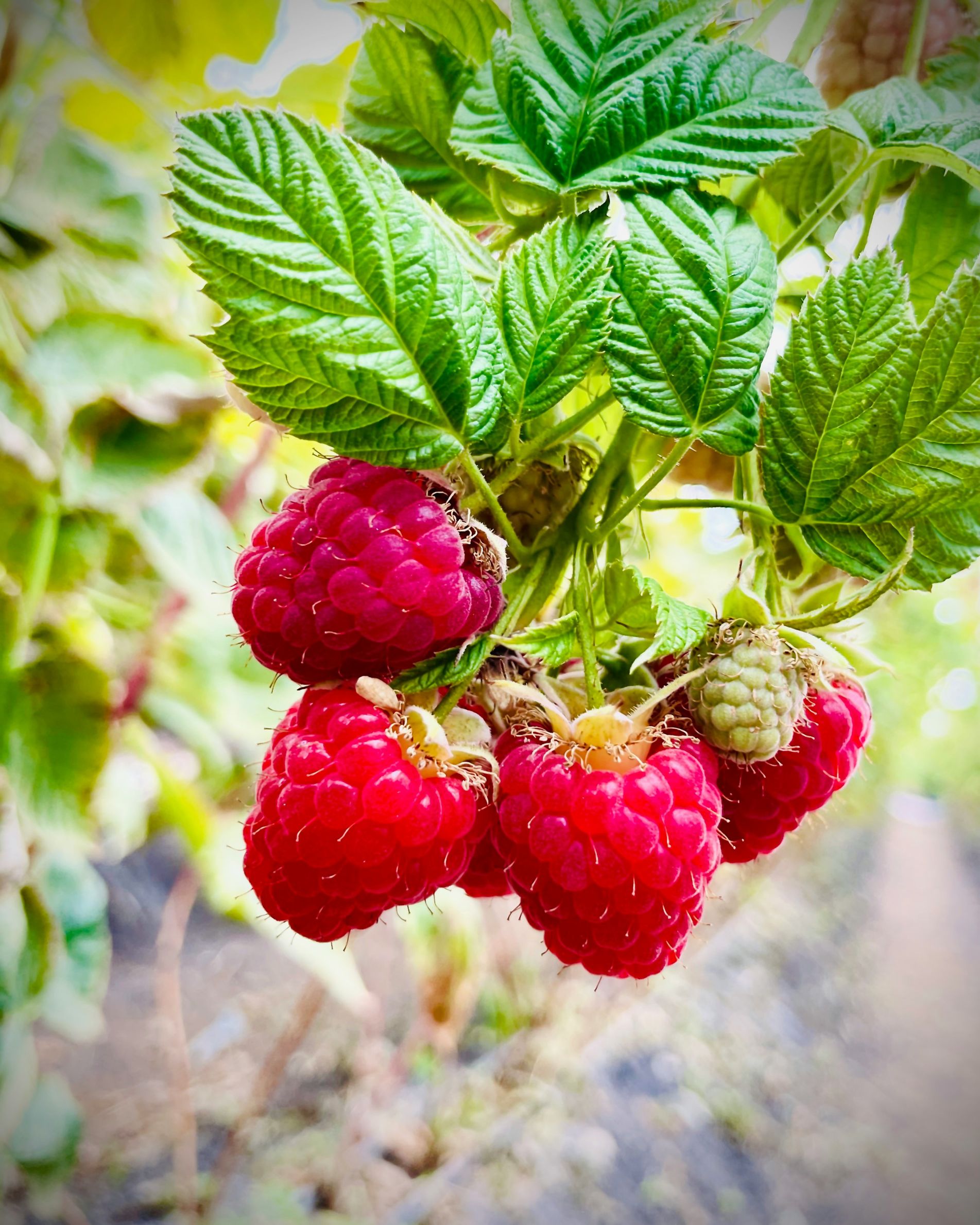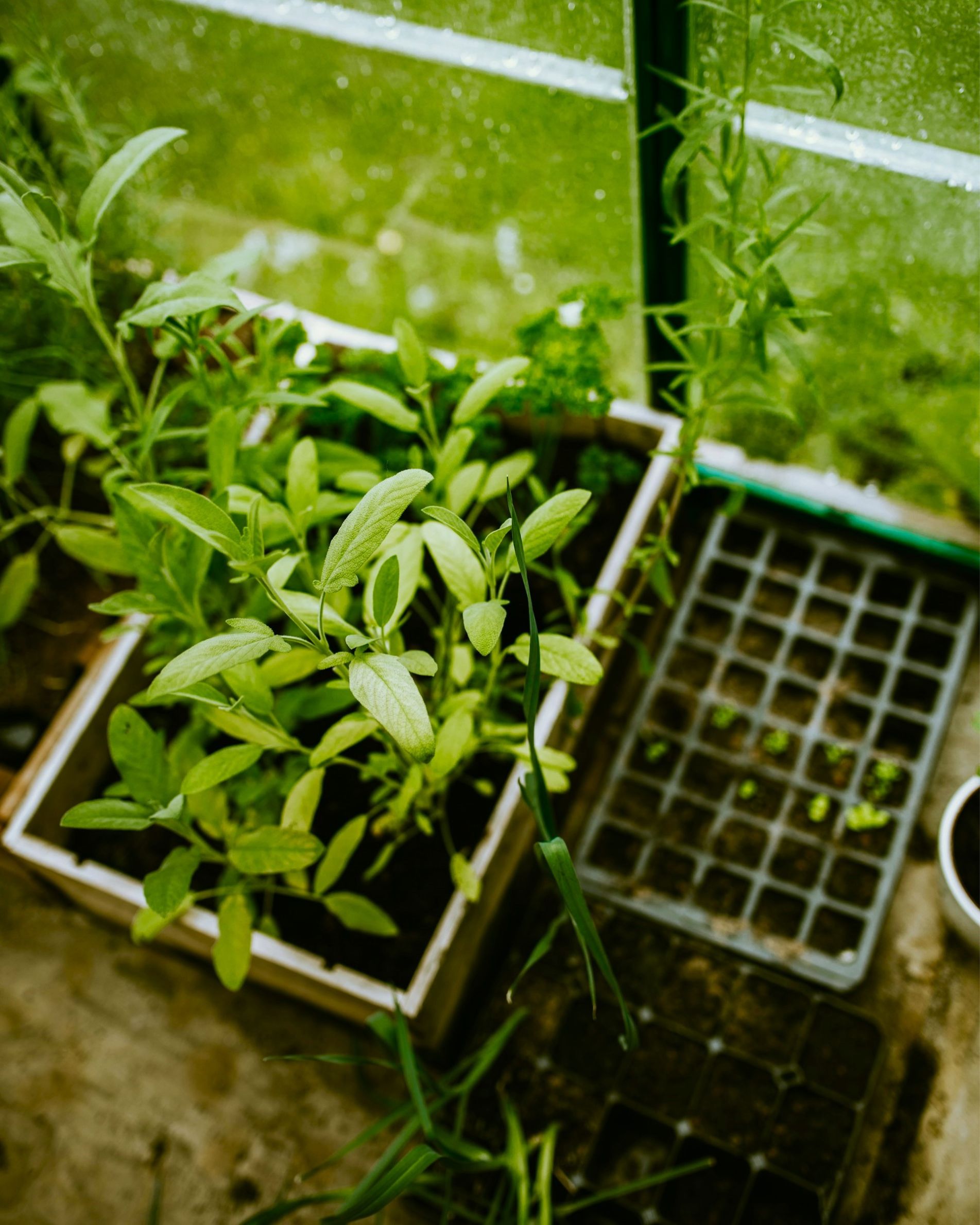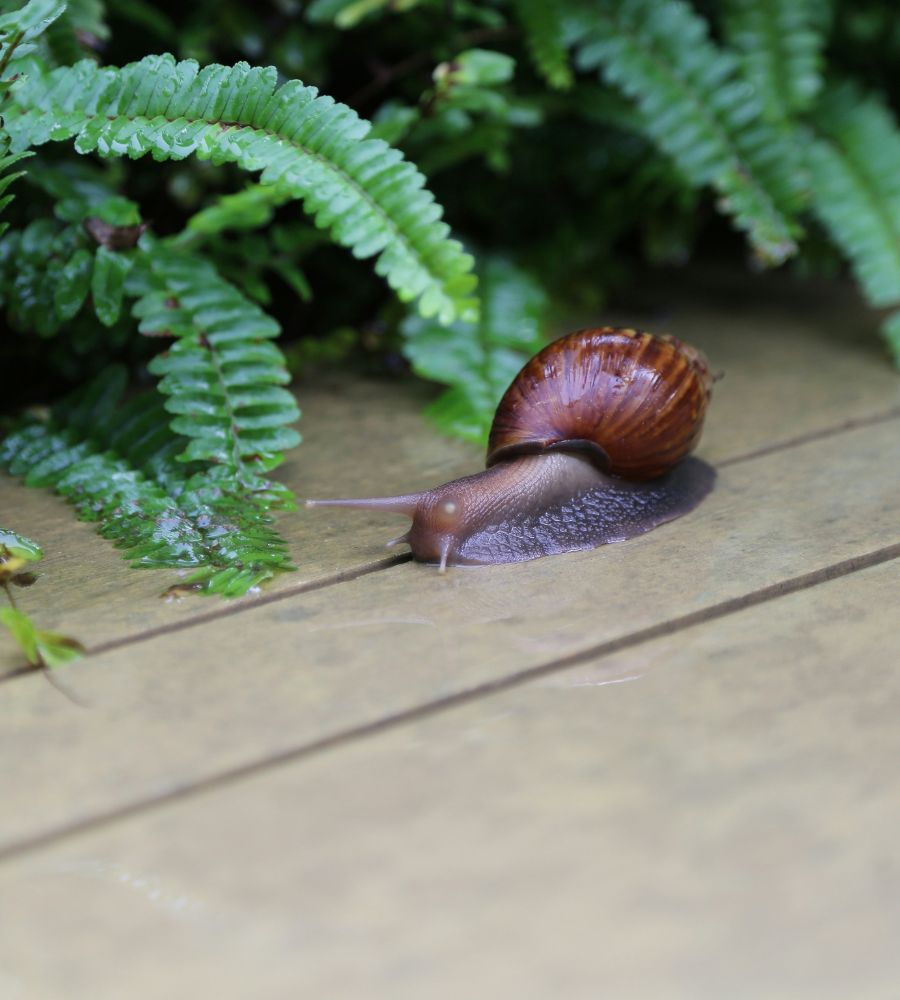
Eleanor Clarke
GARDENING
Slugs and Snails: The Lowdown
It’s probably true to say that most gardeners see slugs and snails as slimy pests hell bent on ruining our best-laid gardening plans, crushing our horticultural hopes and dreams. We get it. They can chomp through a row of newly planted lettuce seedlings overnight; leave the glossy ribbed leaves of hostas tattered and ruined in days; saw down a border of young delphinium plants the moment you turn your back. So can they be banished, controlled, or even forgiven?
What are they? The good, the bad and the ugly
Both slugs and snails are gastropods and, yes, their main diet is plant matter. That said, a lot of this is dead and decaying leaves and flowers, lichen, fungi and so on. So begin to think of them as often useful helpers, perhaps, playing an important role in tidying up the garden. In fact, only four of around 40 common UK slug species will damage your plants. Slugs and snails are also a good food source for hedgehogs, birds, foxes and other wildlife. There’s even one slug, the leopard slug, that is carnivorous, preying on other slugs and snails.
There’s no denying both snails and slugs are masters at reproduction. Snails can have around 500 offspring over the course of a single year; slugs can produce similar numbers, in spring and autumn. Of course, not all of them will survive, and you can help to thin their numbers in a variety of different ways.
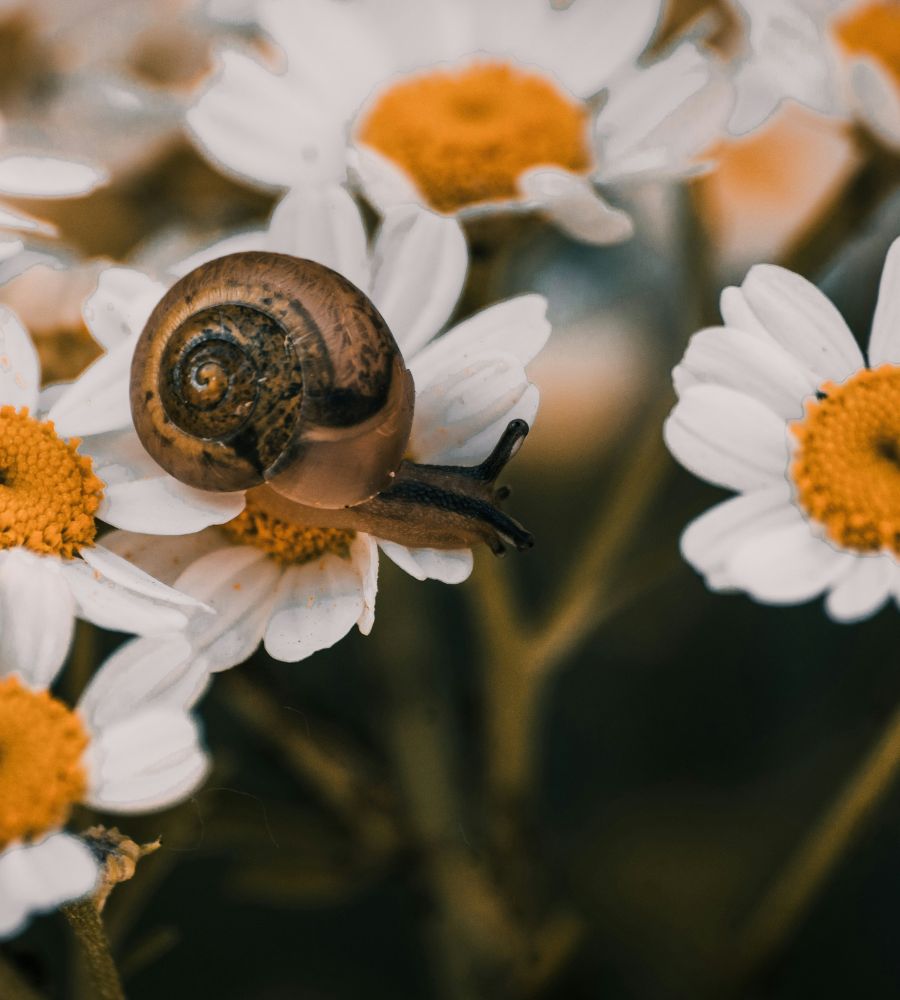
Photo – Pavlo Semeniuk
How to keep numbers down
Gather them up
Place a flat piece of slate or wood on the soil, then lift it up regularly, collect any harbouring beasts and dispose of them as you see fit – in woodland or uncultivated parkland perhaps.
Use nematodes
These microscopic natural predators can be watered onto the soil in spring. They’re not cheap but they are effective if you use them correctly
Set beer traps
Sink containers of beer (old yogurt pots are good, filled with an inch or two of beer) into the soil, leaving an inch of the pot proud of the soil surface; collect and dispose of your catch each the morning.
How to protect your plants
Create barriers
Grit, wool pellets, crushed shells or similar all act as a deterrent around prized plants
Make bottle cloches
Cut the bottom off plastic bottles and push them into the soil around young, vulnerable plants while they grow bigger and less susceptible to attack
Use copper tape
It gives a small electric shock that repels snails and slugs – a useful deterrent on the rims of pots
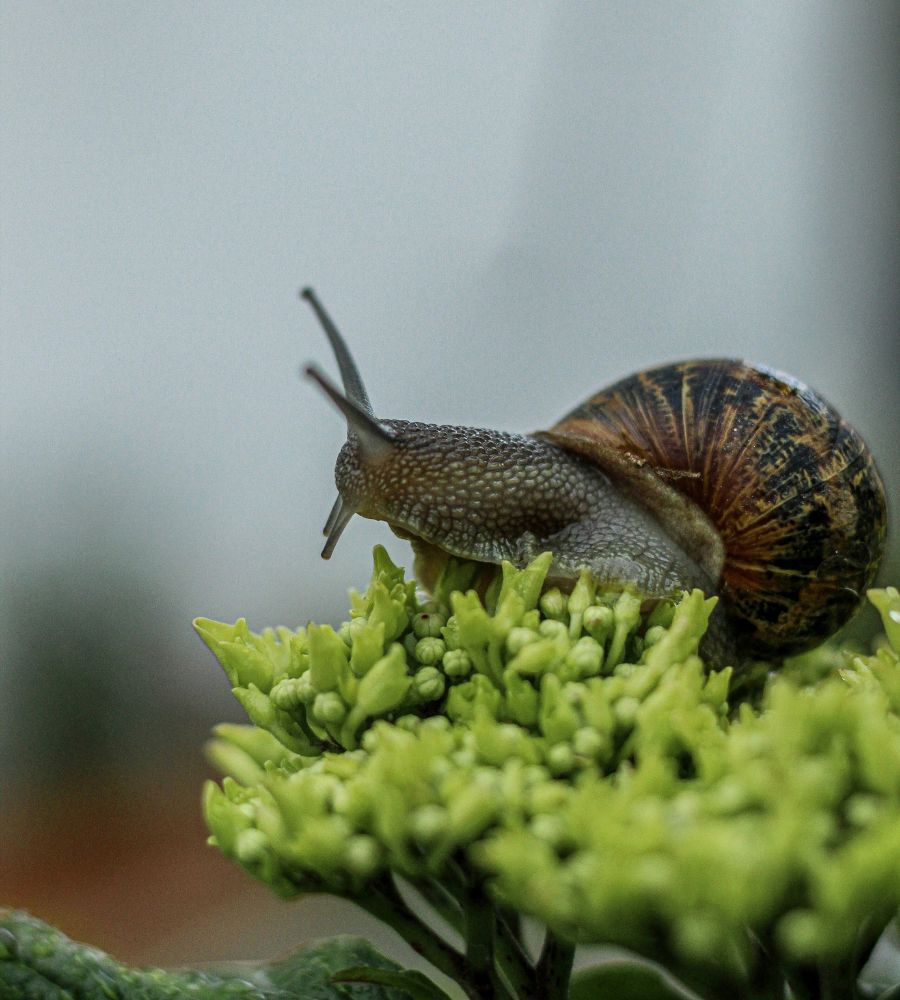
Photo – Pedro Araujo
Other ways to beat slugs and snails
As well as protecting your plants and waging war on the slimy molluscs, there are other effective methods to combat slug and snail damage. We’ve found these to be really helpful:
Let seedlings grow
This involves a little patience when planting out young seedlings and plants. Because most slugs and snails prefer young, lush growth, wait until your plant babies are tough and resilient before abandoning them to their fate. So lettuces should be a decent size, and seedlings should be a foot or so tall with plenty of leaves. That way a nibble or two isn’t the end of the world.
Encourage natural predators
Frogs, toads, birds and ground beetles will all prey on slugs, so make your garden wildlife friendly by avoiding harmful herbicides and pesticides, setting up nesting boxes and introducing a pond. If your boundaries are fences, replace a section or two (or the whole lot!) with a good thick hedge where birds can take cover.
Make them homeless
Slugs and snails love to hide out in piles of rocks, empty flower pots, among rotting plant matter and under plastic sheeting. Remove these and they’ll go elsewhere.
Grow plants they dislike
Some of their favourite plants are hostas, delphiniums, basil, lettuce and beans. However, there are so many species that they will avoid. These include foxgloves, fennel, hardy geraniums, geums, daylilies, pulmonaria, oriental poppies, ornamental grasses, sedums, alchemilla, ferns, hydrangeas, euphorbia, forget-me-nots, nepeta, stachys, lavender, Japanese anemones, verbascum, eryngium and acanthus. As a general rule, if the leaves are in any way spiky, rough or textured, they’re probably a good bet.

